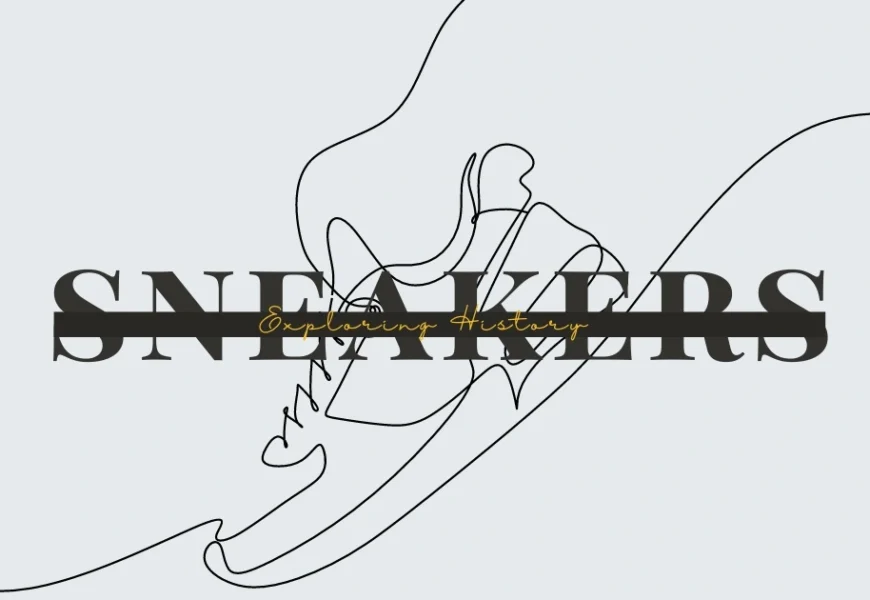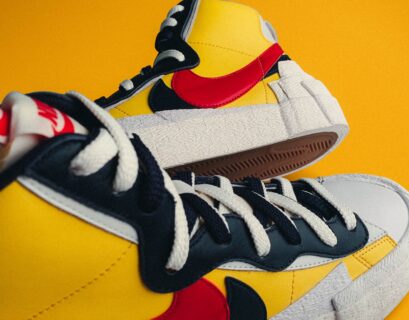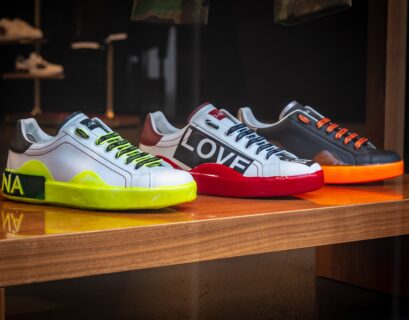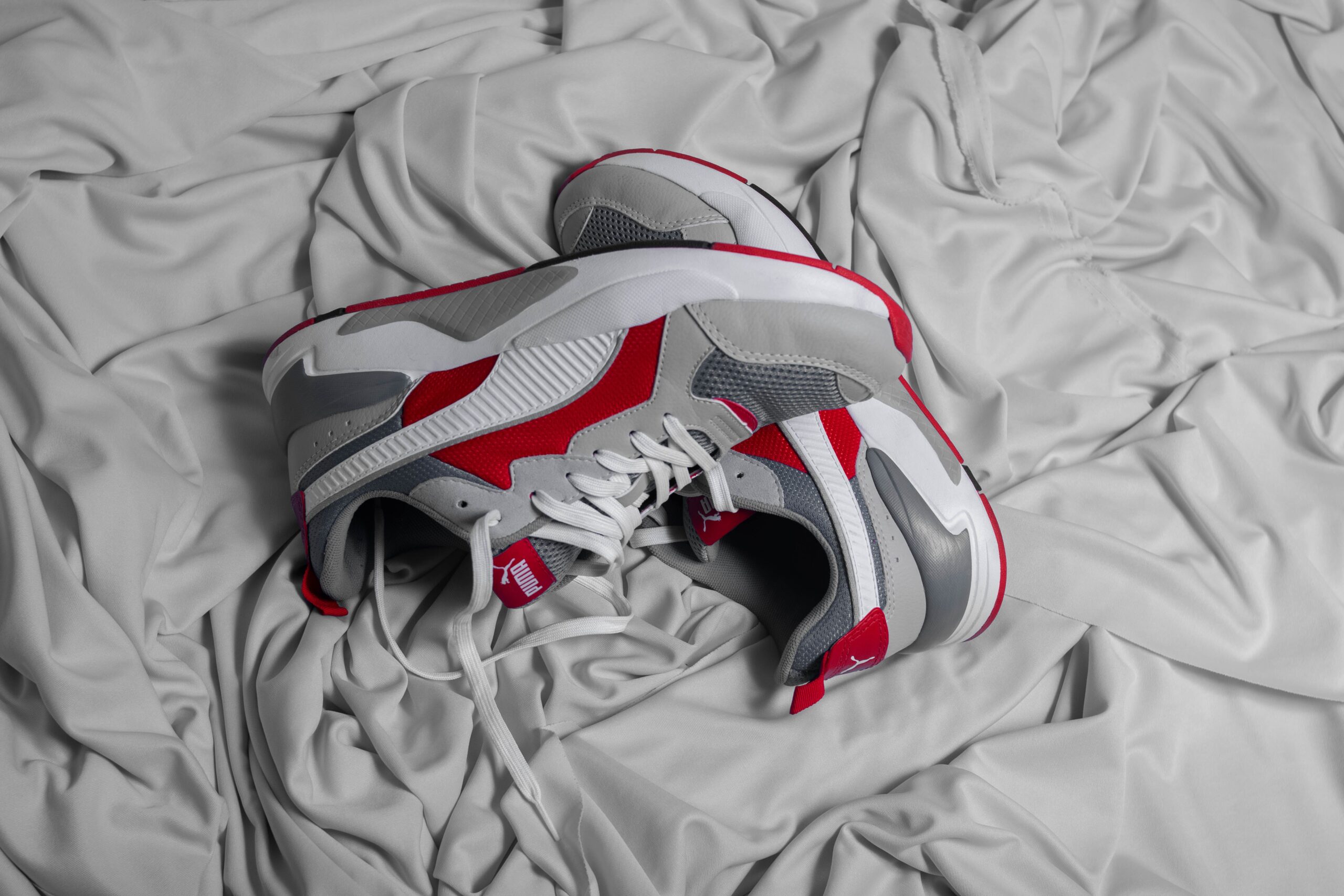Sneakers History & How It Gets Started
Plunge into the captivating universe of Sneakers history, where each pair recounts an exceptional story. From humble starting points as athletic footwear to turning into a worldwide design proclamation, shoes have developed over many years. Investigate how these shoes changed from sports needs to social symbols, molding patterns and ways of life en route. Uncover the starting points of notable brands and the advancements that changed shoe plans. Find what authentic occasions meant for shoe culture and how it keeps on flourishing today.
Origins and Evolution
Name Origins:
Shoes got their name from the peaceful elastic soles that permitted individuals to move without making a commotion. In the UK, they were at first called “plimsolls” since they seemed to be a particular sort of material shoe. As time elapsed, the expression “Sneakers ” acquired fame in the US during the mid-twentieth 100 years.
Sneaker’s historical backdrop goes back to the late eighteenth century when elastic Sneakers originally arose. With the presentation of the Opposite Elite player in 1917, quite possibly of the earliest overall efficiently manufactured tennis shoes, a huge achievement was reached. These shoes immediately turned into a hit among competitors and relaxed walkers in the mid 1900s for their solace and flexibility.
Early History:
During this time, sneakers went from being just shoes that worked to being fashionable sneakers that combined style and function. Vulcanized rubber revolutionized the entire sneaker manufacturing process in the middle of the 1800s. Keds and Puma became well-known as major players in the production of fashionable and comfortable sneakers.
Cultural Significance
From Commodity to Icon:
Sneakers have transformed from basic footwear into symbols of style and status. Influential figures like celebrities and musicians have elevated sneakers to cultural icons. Limited edition collaborations between brands and designers have fueled the trend of collecting sneakers as valuable items.
Pros:
- Shoes are at this point not simply shoes; they address culture, craftsmanship, and distinction.
- Joint efforts make each pair exceptional, and interesting to gatherers and aficionados the same.
Cons:
- Restricted releases can be costly, making it trying for everybody to possess a couple.
- The promotion around selective deliveries once in a while prompts long holding-up lines or online sellouts.
Role in Sports:
Sneakers assume a critical part in sports by giving competitors solace, backing, and footing during exhibitions. Proficient competitors underwriting shoe marks essentially support the prominence of explicit shoe models among avid supporters. Various sorts of shoes are intended for different games like b-ball, running, and tennis.
- Competitors depend on particular Sneakers customized for their game’s requests.
- Supports making associations between fans’ #1 players and the shoes they wear.
- To improve athletic performance, brands constantly develop novel designs.
Fashion Influence:
The impact of shoes reaches past games into high design by testing customary clothing standards and orientation standards. Extravagance style houses currently integrate Sneakers into their assortments, mixing active apparel feel with very good quality plan components consistently due to streetwear culture’s effect on shoe patterns.
Examples:
High-profile design shows include models wearing originator outfits matched with sharp shoes.
Streetwear brands team up with extravagance marks to make selective shoe assortments.
America’s Obsession
Endorsement Surge:
Competitor support play had an essential impact throughout the entire existence of Sneakers. For example, Michael Jordan’s association with Nike was noteworthy. Air Jordans were created as a result of the collaboration, which completely reshaped the sneaker industry. In past games, famous people like performers and entertainers additionally started embracing shoes.
This change made sneaker brands more accessible to a broader audience and broadened their reach. Competitors and superstars became persuasive figures in molding customer inclinations for Sneakers. Their support helped deals as well as added to lifting the situation with Sneakers as style articulations.
Vogue’s Influence:
Vogue magazine is famous for its effect on style, including shoes turning into a standard staple. By highlighting shoes in article spreads Vogue exhibited the flexibility and style possible past athletic wear. This exposure assisted in bridging the gap between high fashion and sportswear.
Vogue’s underwriting of shoes additionally obscured the lines between easygoing footwear and very good quality couture. Because of their promotion by influential publications like Vogue, it became common practice to wear sneakers with casual or even formal attire.
Sneaker Culture Impact
On Fashion:
Sneakers have consistently coordinated into ordinary design, interesting to individuals of any age and social standing. They offer a mix of solace and style, making them a go-to decision for different occasions. For example, shoes can be matched with easygoing outfits or even proper wear, exhibiting their flexibility.
Also, coordinated efforts between shoe brands and notable planners have impelled Sneakers to the front of high style. In the fashion industry, these partnerships result in limited-edition releases that quickly become highly sought-after items. The combination of athletic footwear with a very good quality plan has changed shoes from simple assistants to desired design articulations.
On Society:
The rise of sneaker culture represents more than just a love of footwear; It is a symbol of rebellion against established norms and youth culture. People are testing customary clothing regulations and cultural assumptions by embracing shoes as ordinary wear. This shift towards casualization connotes a more extensive development towards solace and self-articulation in dress decisions.
Moreover, Sneakers act as images of inclusivity inside the design business by separating boundaries that once existed in view old enough, orientation, or social class. Their prominence rises above limits by joining individuals from different foundations under a common appreciation for footwear. From this perspective, shoes have become useful assets for advancing variety and acknowledgment in the public eye.
War and Production
Impact on Sneaker Production:
Progresses in innovation have changed shoe history by reforming creation processes. Computerized production methods play an essential part in improving productivity and decreasing expenses. For example, machines can now join together shoes at a lot quicker pace than previously.
Besides, 3D printing has presented earth-shattering opportunities for customization and plan trial and error in the tennis shoe industry. This inventive innovation permits producers to make multifaceted plans that were once thought incomprehensible. Accordingly, tennis shoe lovers currently approach interesting plans custom-made to their inclinations.
Pros:
- Further developed proficiency
- Diminished creation costs
- More noteworthy plan adaptability
Cons:
- Starting interest in new advances
- Preparing workers for cutting-edge fabrication strategies
The effect of battle on shoe creation can’t be disregarded by the same token. During seasons of contention, assets are frequently diverted towards military endeavors instead of buyer products like shoes. This shift can upset supply affixes and lead to deficiencies of materials required for assembling shoes.
Besides, wars can likewise impact the plan and usefulness of Sneakers. For instance, during The Second Great War, elastic deficiencies prompted the making of material Sneakers as an elective material because of proportioning requirements.
- Advances in Technology
- Expanded robotization
- Smoothed out creation processes
Globalization of Sneakers
Supply and Demand:
Restricted supply and popularity for specific tennis shoe models bring about exchanging at expanded costs. Tennis shoe deliveries frequently make publicity, prompting long holding up lines outside stores or on internet-based stages. To support buyer interest, brands use procedures like restricted releases and selective joint efforts.
Fake shoes present a huge threat to the tennis shoe market. Brands battle this issue by putting resources into against falsifying measures like 3D images, interesting chronic numbers, and validation administrations. Legitimate moves are made against people or associations engaged with the creation and offer of phony shoes.
Anti-infringement Efforts:
Brands take countermeasures against fake Sneakers because of their adverse consequence on the business. Fakes hurt brand notoriety as well as influence deals income fundamentally. Brands aim to prevent customers from knowingly purchasing counterfeit goods by employing authentication services, holograms, and unique serial numbers.
The battle against fake shoes stretches out past preventive measures; lawful activities play a vital part in battling this issue successfully. Through judicial procedures against substances taking part in creating or selling fake products, brands send an unmistakable message about the outcomes of encroaching on licensed innovation freedoms.
Designer Fashion Sneakers:
Designer Sneakers Luxury fashion brands have introduced high-end designer versions of sneakers, elevating them to a whole new level. These architect shoes are not your normal pair; they gloat premium materials, complicated craftsmanship, and novel plan components that put them aside from conventional choices.
These sneaker brands have created fashionable kicks that blur the lines between high fashion and streetwear by combining luxury and sportswear. For example, notable fashioners like Gucci, Balenciaga, and Louis Vuitton have all hopped on the pattern, offering select assortments of upscale shoes that take special care of those looking for both style and solace. By elevating a once-casual item into a coveted fashion statement, the rise of these designer sneakers has revolutionized the industry.
- Extravagance style brands presented very good quality fashion Sneakers.
- Originator Sneakers include premium materials and special plan components.
- The traditional distinctions between streetwear and high fashion are muddled.
Extravagance tennis shoe organizations focus on higher expectations without compromise while creating their footwear pieces. They frequently utilize first-class materials like fine calfskin or softened cowhide for sturdiness and solace. These athletic shoes go through fastidious craftsmanship cycles to guarantee everything about amazing before hitting store racks.
Designer sneakers, in contrast to mass-produced running shoes, prioritize exclusivity over widespread availability. While significant game shoe organizations might deliver a large number of matches each day utilizing mechanized processes, extravagance shoe brands settle on restricted discharges with scrupulousness at each step.
- Extravagance tennis shoe organizations focus on quality materials over amount.
- Careful craftsmanship guarantees flawlessness in each pair.
- Center around selectiveness, as opposed to large-scale manufacturing, separates planner Sneakers
Sustainability and Ethics
Ethical Production:
Sustainability and Ethics Ethical Production Sneaker manufacturers are being pressured more and more to make sure their products are made ethically. Cognizant shoppers focus on straightforwardness in supply chains and fair work conditions. Action like fair trade certifications, viable sourcing, and worker-licensed programs are becoming increasingly important for brands to meet consumer needs.
Concerns concerning the treatment of laborers in shoe plants should be tended to. They are able to reassure customers that the goods they sell are produced ethically by enforcing fair labor practices. For instance, a few brands distribute reports specifying their providers and working circumstances to upgrade straightforwardness.
Sustainability Efforts:
In light of ecological difficulties, tennis shoe brands are embracing practical materials like reused plastics and natural cotton. These eco-accommodating choices assist with lessening the dependence on non-sustainable assets while diminishing the carbon impression of creation processes. Reusing programs for old Sneakers further advances supportability by decreasing waste age.
A few organizations go past conventional materials by investigating creative arrangements, for example, utilizing green growth-based materials in shoe creation. This groundbreaking approach intends to limit ecological effects while encouraging innovativeness inside the business. By consolidating these economical practices, shoe brands add to a greener future for style footwear.
Closing Thoughts
You’ve ventured through the development, social effect, and globalization of shoes. Sneakers have laced their way into the fabric of society from their modest beginnings to their current status as a fashion record. The problem with Sneakers isn’t just about design; it’s about history, character, and development. As we step forward into the future, supportability and morals in tennis shoe creation become central. Not just looking good is important; it’s tied in with doing great as well. So next time you trim up your number one sets, recall the excursion they’ve been on and the means on the way.
In this way, step into the universe of Sneakers with a recharged appreciation for the tales they convey and the effect they make. Your decisions as a customer can shape the eventual fate of tennis shoe culture. Lace-up, stand tall, and walk toward a sneaker industry that is more ethical and sustainable.
Often Sought clarification on some things
What is the meaning of shoes in American culture?
Shoes are something beyond footwear; They represent self-expression, style, and comfort. Sneakers have developed into a cultural symbol in the United States that represents sports, hip-hop culture, and even social status.
How has the sneaker industry been affected by globalization?
Globalization has changed the tennis shoe industry by empowering brands to arrive at more extensive business sectors and team up with worldwide fashioners. It has prompted assorted styles and developments while additionally raising worries about work rehearses in assembling nations.
Are creator-style shoes worth the speculation?
Originator-style Sneakers mix extravagance with streetwear offers, making them a sought-after thing among design devotees. While expensive, these Sneakers frequently gloat unrivaled craftsmanship and special plans that can hoist any outfit.
Which job does supportability play in the creation of Sneakers?
Supportability is progressively significant in shoe creation because of natural worries. Eco-friendly materials like organic cotton and recycled plastic are being used by brands to cut down on waste during the manufacturing process.
Why is figuring out the historical backdrop of Sneakers fundamental for devotees?
Knowing the starting points and development of shoes gives devotees a more profound appreciation for their #1 footwear. It permits them to figure out how social impacts, mechanical headways, and cultural changes have formed the present different shoe scene.
Replica sneakers Market evolution.
2024-05-28• News, Trending • One Comment
Difference Between Original & Fake Sneakers.
2024-05-28• News, Trending • One Comment
Copied sneakers aren’t as it might seem
2024-05-28• Feature, News, Trending • 2 Comments









